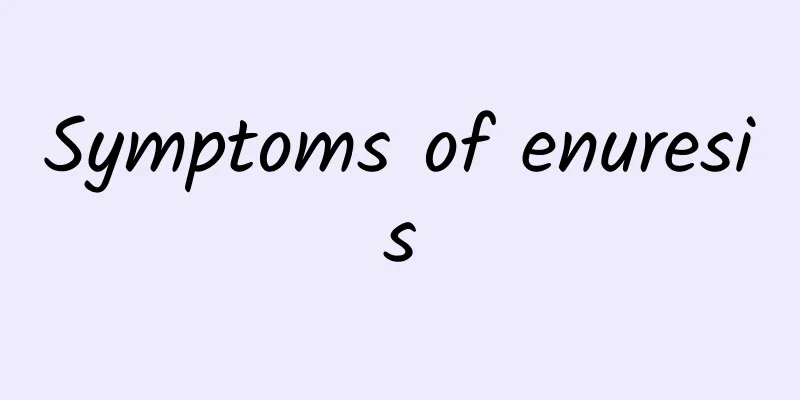Diarrhea and black stool

|
Diarrhea is caused by some problems in our stomach. In this case, we will go to the toilet frequently, and we will suffer from rectal prolapse. The anus will be very painful, and this situation will last for a long time. The color of the excrement caused by diarrhea can vary. For example, some people will excrete black feces. So what is the reason for black feces caused by diarrhea? This is a condition caused by enteritis. Enteritis is an inflammation of the small intestine and colitis caused by bacteria, viruses, fungi and parasites. The main clinical manifestations include abdominal pain, diarrhea, loose watery stools or mucus, pus and blood in the stools. Some patients may have fever and a feeling of tenesmus, so it is also called infectious diarrhea. Enteritis is divided into two categories: acute and chronic according to the length of the disease. The course of chronic enteritis is generally more than two months. Common clinical diseases include chronic bacillary dysentery, chronic amoebic dysentery, schistosomiasis, nonspecific ulcerative colitis and localized enteritis. Causes 1. Viral enteritis Viral enteritis is seen in enteritis caused by canine distemper virus, canine parvovirus, canine and feline coronavirus, etc. Among viral enteritis, rotavirus is the main cause of diarrhea in infants and young children, while norovirus is the main cause of epidemic viral gastroenteritis in adults and older children. 2. Bacterial enteritis Bacterial enteritis includes enteritis caused by Escherichia coli, Salmonella, Yersinia (causing enterocolitis), Bacillus sporogenes, Campylobacter jejuni, Clostridium (canine hemorrhagic gastroenteritis), etc. The most common pathogenic bacteria of bacterial enteritis is Shigella dysenteriae, followed by Campylobacter jejuni and Salmonella. 3. Fungal enteritis Fungal enteritis includes enteritis caused by Histoplasma, algae-like bacteria, Aspergillus, Candida albicans, etc. Fungal enteritis is most often caused by Candida albicans. 4. Parasitic intestinal Parasitic enteritis includes enteritis caused by flagellates, coccidia, toxoplasma, ascaris, hookworms, etc. Among the enteritis caused by parasites, Entamoeba histolytica is the most common. 5. Enteritis caused by diet Contaminated or spoiled food, irritating chemicals, certain heavy metal poisoning, and certain allergic reactions can all cause enteritis. 6. Enteritis caused by antibiotics Misuse of antibiotics can lead to intestinal flora imbalance or enteritis caused by the emergence of antibiotic-resistant strains. Clinical manifestations 1. Acute enteritis In my country, the incidence rate is higher in summer and autumn, with no gender difference. The general incubation period is 12 to 36 hours. Nausea, vomiting and diarrhea are the main symptoms of acute enteritis. 2. Chronic enteritis The clinical manifestations are long-term chronic or recurrent abdominal pain, diarrhea, indigestion, etc. In severe cases, there may be mucus or watery stools. The severity of diarrhea varies. In mild cases, patients may have bowel movements 3 to 4 times a day, or diarrhea and constipation may occur alternately; in severe cases, patients may have bowel movements every 1 to 2 hours, and may even suffer from fecal incontinence. Some patients may have nocturnal diarrhea and/or postprandial diarrhea. When the rectum is severely affected, a feeling of tenesmus may occur. The feces are mostly paste-like, mixed with a large amount of mucus, and often contain pus and blood. Some patients have fresh blood in their stools, and the lesions are limited to the rectum, which is called hemorrhagic proctitis. The blood or stool is discharged separately, or attached to the surface of normal or dry stool, which is often mistaken for hemorrhoidal bleeding. Patients with proctitis often have mucus and blood in their stools, and may even suffer from fecal incontinence. If the lesions extend above the rectum, blood is often mixed with the stool or bloody diarrhea occurs. Physical examination may reveal mild tenderness around the umbilicus or lower abdomen, hyperactive bowel sounds, and rectal prolapse. examine 1. Barium X-ray examination Barium examination is generally not suitable during the acute phase. Special attention should be paid to the possibility of intestinal dilatation and perforation during barium enema in patients with severe ulcerative colitis. Barium enema is of great value in the diagnosis and differential diagnosis of this disease. During the clinical quiescent period, a barium enema examination can be performed to determine proximal colon lesions. If Crohn's disease needs to be excluded, a full digestive tract barium meal examination should be performed. The air-barium double contrast method is more likely to detect superficial mucosal lesions. 2. Endoscopic examination Clinically, most lesions are in the rectum and sigmoid colon, and sigmoidoscopy is very valuable. For patients with chronic or suspected pancolonic disease, pancoloscopy is appropriate. Cleansing enema is generally not performed, and it should be contraindicated in severe acute phases to prevent perforation. diagnosis It varies depending on the pathogen. Generally, a preliminary judgment should be made based on medical history and clinical manifestations. Further diagnosis requires laboratory testing. Bacterial enteritis can be confirmed by culture of vomitus and stool and obtaining pathogenic bacteria. Blood culture can be used for some pathogens such as Salmonella infection. Viral enteritis can be diagnosed by electron microscopy, immunoelectron microscopy, immunofluorescence, and serological tests such as complement fixation test, enzyme-linked immunosorbent assay, and radioimmunoassay to detect viral antigens and antibodies. Parasitic enteritis can be directly examined under a microscope to look for pathogens and their eggs. Fungal enteritis can be treated by direct smearing of the stool, examination of fungi under a microscope or stool fungal culture. treat 1. Pathogen treatment Viral enteritis generally does not require pathogen treatment and can heal on its own. For bacterial enteritis, it is best to select antibiotics based on the results of bacterial drug sensitivity tests. When suffering from bacillary dysentery, because Shigella dysenteriae is widely resistant to commonly used antibiotics, co-trimoxazole (cotrimoxazole), pipemidic acid, gentamicin, amikacin, etc. can generally be used. Campylobacter jejuni enteritis can be treated with erythromycin, gentamicin, chloramphenicol, etc. Yersinia enterocolitica enteritis is generally treated with gentamicin, kanamycin, co-sulfamethoxazole, tetracycline, chloramphenicol, etc. Patients with mild Salmonella enteritis may not need antibiotics, while patients with severe cases can use chloramphenicol or trimethoprim-sulfamethoxazole. Invasive Escherichia coli enteritis can be treated with neomycin, colistin and gentamicin with good results. Amoebic dysentery, enteritis caused by Giardia lamblia and Trichomonas can be treated with metronidazole (Flagyl). Schistosomiasis can be treated with praziquantel. Oral nystatin is effective in treating Candida albicans enteritis. Patients with systemic fungal infection need to be treated with amphotericin B. 2. Symptomatic treatment Replenish fluids and correct electrolyte and acidosis. For those who are mildly dehydrated and do not vomit severely, oral rehydration can be given. The WHO-recommended oral rehydration formula is sodium chloride, sodium bicarbonate, potassium chloride, glucose or sucrose, plus water. For patients with severe dehydration or vomiting, normal saline, isotonic sodium bicarbonate and potassium chloride solutions, and glucose can be given intravenously. Drugs that reduce intestinal motility and secretion. Atropine, belladonna, and propantheline can be used in small amounts to reduce intestinal motility, relieve pain, and stop diarrhea. Chlorpromazine can also be used. It has a sedative effect and can inhibit excessive secretion of intestinal mucosa caused by enterotoxins, thereby reducing the frequency and amount of bowel movements. prevention We should strengthen our exercise and improve our physical fitness. Do not eat meat and offal from sick or dead animals. Meat, poultry, eggs, etc. must be cooked before consumption. Do not eat rotten or spoiled food, do not drink raw water, scald fruits and vegetables before eating them raw, and develop a good habit of washing hands before meals and after going to the toilet. Strengthen food hygiene management and prohibit the sale of spoiled food or food contaminated by Salmonella. Pay close attention to food preparation hygiene to prevent food contamination. Do a good job in water source protection, drinking water management and disinfection. |
<<: What is the best medicine for diarrhea?
>>: What should I do if I have diarrhea for two days?
Recommend
Why is there pain in the middle of the waist?
Many people experience pain in the middle of thei...
What are the symptoms of depression in the elderly?
Compared with young people, the elderly are more ...
My neck keeps sweating when I fall asleep
The physiological phenomenon of sweating only occ...
How to improve shallow sleep and easy awakening
When you sleep, if you have a shallow sleep, you ...
Thickness detection of cesarean section scars for second child
If the first child was delivered by caesarean sec...
Are there still follicles in premature ovarian failure?
Symptoms of premature ovarian failure include no ...
How to treat rheumatism
I believe that some of our friends or relatives a...
Can people with gastric ulcer eat seafood? A light diet is the most important
Everyone likes to eat seafood, but it is not suit...
Foreign body sensation in the throat
The throat is a very important organ in our human...
Why do my feet hurt after a pedicure?
When people get older, they will have various phy...
What to do if you sprain your hamstring? Six tips to help you walk briskly
Hamstring sprains are very common in daily life. ...
How can pregnant women stay away from radiation?
During pregnancy, expectant mothers may feel phys...
What does high echo in the uterus mean?
When a woman feels some discomfort in her body, s...
Pain in the anus when sitting down
Sometimes when you sit down, if you experience an...
What to do if you have a stomachache
Abdominal pain is a common abdominal disease, whi...









